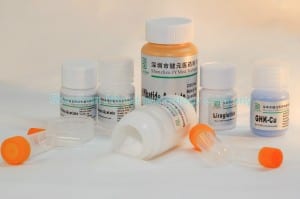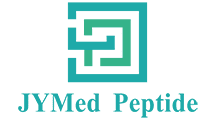Pre-clinical studies include laboratory evaluation of the purity and stability of the manufactured drug substance or active pharmaceutical ingredient and the formulated drug or drug product, as well as in vitro and animal studies to assess the safety and activity of the drug for initial testing in humans and to establish a rationale for therapeutic use. The conduct of pre-clinical studies is subject to federal regulations and requirements, including GLP regulations. The results of the pre-clinical tests, together with manufacturing information, analytical data, any available clinical data or literature and plans for clinical trials, among other things, are submitted to the FDA as part of an IND. Some long-term pre-clinical testing, such as animal tests of reproductive adverse events and carcinogenicity, may continue after the IND is submitted.
Generally, if for any taxable year 75% or more of our gross income is passive income, or at least 50% of the average value of our assets are held for the production of, or produce, passive income, we would be characterized as a passive foreign investment company, or PFIC, for U.S. federal income tax purposes. Based upon our review of our financial data, we believe that we were not a PFIC for our 2018 taxable year however we expect to be a PFIC for the 2019 taxable year. Because the PFIC determination is highly fact intensive, there can be no assurance that we will be a PFIC in 2019 or for any other taxable year. If we were to be characterized as a PFIC for U.S. federal income tax purposes in any taxable year during which a U.S. Holder (as defined below) owns ordinary shares, such U.S. Holder could face adverse U.S. federal income tax consequences. For example, such U.S. Holder could be subject to additional taxes and interest charges upon certain distributions by us and any gain recognized on a sale, exchange or other disposition of our shares, whether or not we continue to be characterized as a PFIC. Certain adverse consequences of PFIC status can be mitigated if a U.S. Holder makes an election to treat us as a qualified electing fund, or QEF However, it is not expected that a U.S. Holder will be able to make a QEF election because we do not intend to provide U.S. Holders with the information necessary to make a QEF election. See also “Item 10. Additional Information—E. Taxation— Certain U.S. Federal Income Tax Considerations.”
Don’t be careful Aldebaran, we’re all just having fun here, and who knows, today’s science fiction may be tomorrow’s science.
D.G. and Y.Z. conceived the study and directed the experiments. D.G., J.U.R. and R.R. guided the manuscript revision. K.K., G.H., Z.W., H.L. and X.Z. conducted experiments on sample preparation. Y.Z., H.L. and J.Z. performed the experiments. W.P. contributed reagents / materials / analysis tools. Y.Z. and D.G. analyzed the data and coauthored the paper. All authors approved the manuscript.

The BMSCs were cultured on tissue culture plastic (noted as Blank), PE, PAr and PArN. Four groups of BMSCs were harvested at day 1 and day 3 and the cells were treated with or without 5 μM 7-xylosyl-10-deacetylpaclitaxel. After incubation for 24 h, the cells were collected and stained with 50 μg/mL DAPI (Partec, Munster, Germany). The cell cycle distribution of 1 × 105 cells was determined by flow cytometry (Partec) and the cell cycle analysis was performed using FloMax software. The fractions of cells in the G0/G1, G2, and S phases of the cell cycle and proliferation index (PI) were analyzed.
The purpose of reporting comprehensive income is to report a measure of all changes in equity of an entity that result from recognized transactions and other economic events of the period resulting from transactions from non-owner sources.
Wuest, D. M., Wing, A. M. & Lee, K. H. Membrane configuration optimization for a murine in vitro blood – brain barrier model. J Neurosci Meth. 212, 211–221 (2013).
Furthermore, Israeli tax considerations may make potential transactions unappealing to us or to our shareholders whose country of residence does not have a tax treaty with Israel exempting such shareholders from Israeli tax. See “Item 10. Additional Information—E. Taxation—Certain Israeli Tax Considerations” for additional information.

The polyethylene (PE) pellets as a model of the polymeric implant were purchased from Lucoil Chemical (Grade 277–73), press molded into 10 cm × 10 cm pieces with a thickness of 0.5 mm, and ion implanted using a Kauffman ion source. The base vacuum was less than 1.0 × 10−5 Pa. High-purity argon (99.99%) was introduced into the ion source and argon plasma immersion ion implantation (PIII) with an ion implant fluence of 6.14 × 1015 ions/cm2 was conducted at 5 kV for 10 min. Calibration of the ion implant fluence was accomplished by a Faraday cup and the working pressure in the vacuum chamber was 2.0 × 10−2 Pa during ion implantation. Afterwards, high-purity nitrogen (99.99%) was introduced in place of argon, and nitrogen PIII was conducted with the same ion implant fluence. Afterwards, the samples remained in vacuum for 10 min. The argon ion-implanted PE was denoted as PAr whereas the PE implanted with both argon and nitrogen was labeled as PArN.
In eculizumab-switch patients, transfusion-independent patients (n=5) switching from eculizumab to zilucoplan maintained an overall stable mean LDH level, with one patient withdrawing early due to breakthrough hemolysis and reverting to eculizumab without complications. Among switch patients who were transfusion-dependent at baseline (n=11), breakthrough hemolysis occurred after switching in seven patients, who all reverted to eculizumab treatment without complications. Persistent transfusion-dependence in patients treated with eculizumab is not adequately addressed by C5 inhibition, as it is most commonly attributable to extravascular hemolysis, which is promoted by the action of complement factors upstream of C5.
Majumdar, A., Schröder, K. & Hippler, R. Cytocompatibility of amorphous hydrogenated carbon nitride films deposited by CH4/N2 dielectric barrier discharge plasmas with respect to cell lines. J. Appl. Phys. 104, 074702 (2008).
Results of pre-clinical studies and early clinical trials may not be predictive of results of future clinical trials.
A 30-Year History of PLG Applications in Parenteral Controlled Drug Release | Synthetic Angiotensin Ii Gmp Provider From China Related Video:
Our growth depends on the superior equipment ,exceptional talents and continuously strengthened technology forces for Glp-1(7-36)Amide, Leuprorelin Acetate Gmp Exporter, Abaloparatide Peptide Api Provider, They're durable modeling and promoting effectively all over the world. Under no circumstances disappearing major functions in a quick time, it's a should for you of excellent good quality. Guided by the principle of "Prudence, Efficiency, Union and Innovation. the company make a terrific efforts to expand its international trade, raise its company profit and raise its export scale. We're confident that we are going to possess a vibrant prospect and to be distributed all over the world within the years to come.







